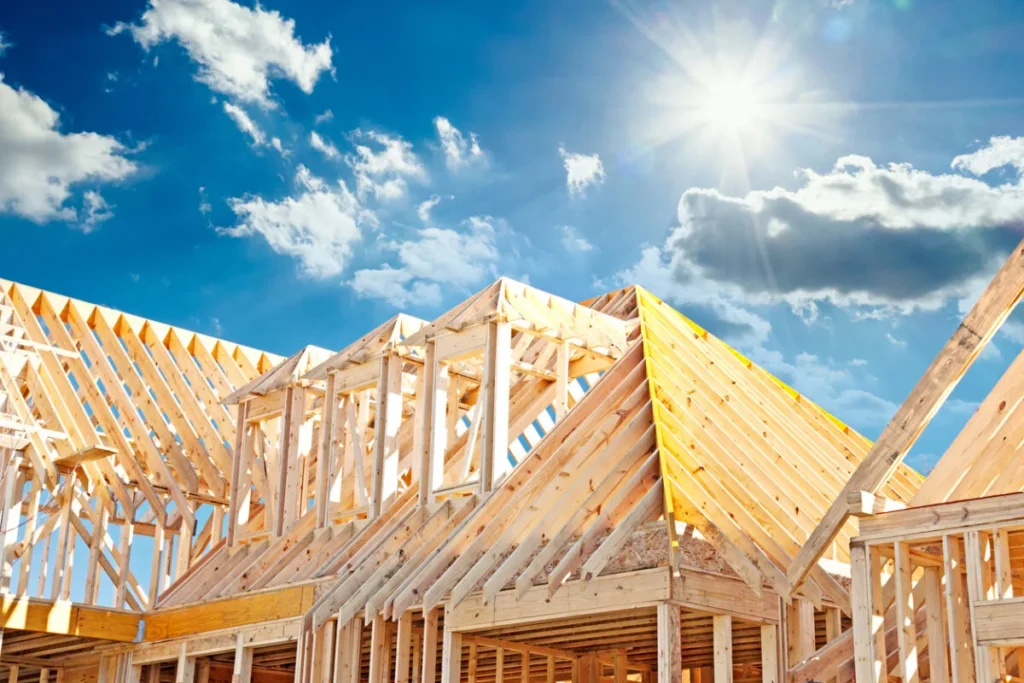We all have a lot of work to do to keep the world on track to reach net-zero carbon emissions by 2050. According to an overwhelming majority of the scientific community, that’s what needs to happen if we’re to avoid the worst effects of climate change later this century.
Can it be done? That’s for others to say. But what’s not up for debate is that each of us has a role to play. And for those of us not plugged into state or national policymaking, that means making sensible changes closer to home. Including to our actual homes — and to much larger residential, commercial, and industrial buildings too.
Let’s take a look at five sustainable building materials and technologies that are already transforming the built environment today.
1. Metal Roofing
In many parts of the world, residential roofs are made of petroleum-based asphalt shingles laid over rubber membranes. These materials are durable (up to a point) and relatively cheap, but they’re not very good for the environment.
That’s led sustainability-minded engineering firms and forensic experts like Karim Allana’s ABB to seek out alternatives that last even longer and aren’t quite as tough on the planet. One underappreciated option is factory painted, corrosion-resistant metal, which has a far longer lifespan than asphalt and requires less maintenance over time. Particularly when it’s made using low-carbon steelmaking processes, which we’ll discuss later.
2. Mass Timber Supports
Most new skyscrapers still use steel and concrete structural supports, but recent advances in structural composite lumber (SCL) technology may soon threaten their dominance. At least, for midrise and “low-highrise” buildings like Ascent MKE, a 25-story residential building near Milwaukee’s lakefront.
Why should we care? Because mass timber, as it’s known, has a lower carbon footprint than traditional steel and cement. As it replaces those materials in new intermediate-height buildings, it could significantly reduce our cities’ total carbon intensity.

3. Cellulose Insulation
Can shredded newspapers save the planet? Not all on its own, but it definitely has a role to play.
That’s because it’s the primary ingredient in cellulose insulation, a low-tech and relatively low-cost material that’s gaining (or regaining) favor as an eco-friendly weatherization material in single-family and small multifamily residences.
Cellulose insulation’s insulating power (its R-value) isn’t quite as high as higher-tech alternatives like spray foam insulation. However, it’s nearly as good, and it’s significantly cheaper, so it’s more cost-effective. Critically, because it’s recycled and uses regenerative (wood pulp) rather than petrochemical inputs, it has a much lower carbon footprint. So it’s an all-around better choice for the environment.
4. Low-Carbon Concrete
Concrete is responsible for about 8% of global planet-warming emissions. Part of the problem is that the heat required to make cement and process it into concrete mostly comes from carbon-intensive sources like gas and coal. But the bigger issue is that the cement-making process itself releases massive amounts of carbon formerly trapped in the raw limestone that becomes cement.
At the moment, we don’t have a cost-competitive alternative to concrete, but plant-based materials like hempcrete could scale up to fill at least part of the gap.
5. Green Steel
Like concrete, the steelmaking process involves a carbon-intensive chemical reaction that’s difficult to replace. Work is being done to scale up lower-carbon alternatives, but that’ll take time.
In the meantime, we have a partial “green steel” solution going into buildings right now: recycled steel made in electric arc furnaces. The recycling process isn’t nearly as carbon-intensive, and as renewable energy accounts for an ever-greater share of total grid output, it’ll get even cleaner. In the not-too-distant future, recycled steel could be nearly carbon-neutral.
Building for Tomorrow
It’ll be years before we see truly green concrete or non-recycled structural green steel in commercial building projects.
That’s the bad news. The better news: Mass timber, low-carbon roofing, and cellulose insulation are ready for prime time right now. Keep that in mind as you plan your next building project.






